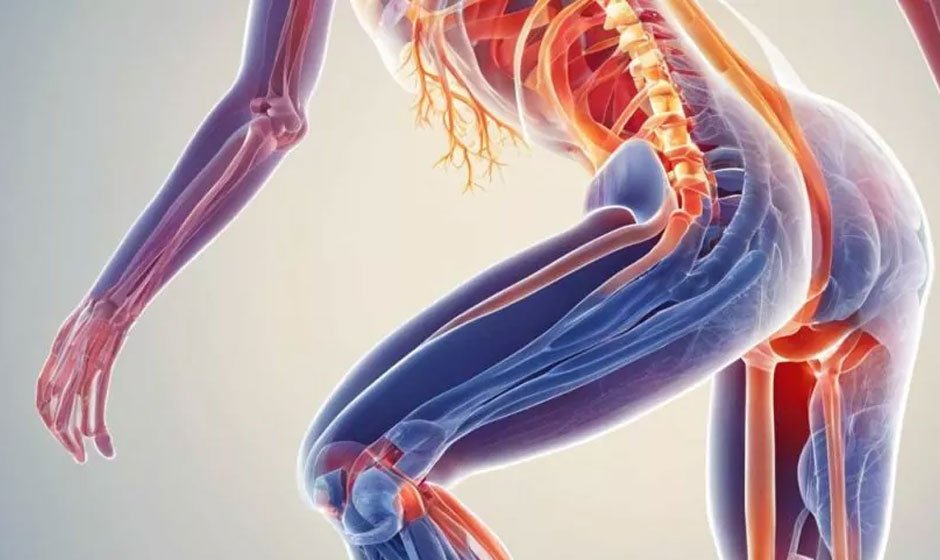Sciatica is a prevalent yet often misunderstood condition that affects millions of people worldwide. Characterized by pain that radiates along the path of the sciatic nerve, sciatica can be debilitating and significantly impact one’s quality of life. In this blog post, we’ll delve into the causes, symptoms, and various treatment options available for managing sciatica.
Understanding Sciatica:
To understand sciatica, it’s essential to comprehend the anatomy of the sciatic nerve. The sciatic nerve is the longest in the human body, extending from the lower back down through the buttocks and into each leg. It plays a crucial role in connecting the spinal cord with the muscles in the legs and feet.
Causes of Sciatica:
Sciatica typically occurs when the sciatic nerve is compressed or irritated. Several underlying conditions can lead to this compression, including:
- Herniated Disc: One of the most common causes of sciatica is a herniated disc. When a disc in the spine bulges or ruptures, it can press against the sciatic nerve, leading to pain and discomfort.
- Spinal Stenosis: This condition involves the narrowing of the spinal canal, which can put pressure on the nerves, including the sciatic nerve.
- Degenerative Disc Disease: With age, the discs in the spine may degenerate, leading to reduced cushioning between the vertebrae and potential nerve compression.
- Piriformis Syndrome: The piriformis muscle, located in the buttocks, can sometimes irritate or compress the sciatic nerve, causing symptoms similar to sciatica.
- Spondylolisthesis: This condition occurs when one vertebra slips forward over another, potentially pinching the sciatic nerve.
Symptoms of Sciatica:
The hallmark symptom of sciatica is pain that radiates from the lower back down through the buttocks and into one or both legs. This pain may vary in intensity, ranging from a mild ache to sharp, shooting pains. Other common symptoms of sciatica include:
- Numbness or tingling in the leg or foot
- Muscle weakness in the affected leg
- Difficulty standing or walking
- Pain that worsens with sitting or coughing
It’s essential to note that sciatica symptoms can vary from person to person, and not everyone will experience all of these symptoms.
Treatment Options:
Fortunately, many treatment options are available to help manage sciatica and alleviate symptoms. These treatments may include:
- Medications: Over-the-counter pain relieverssuch as ibuprofen or naproxen can help reduce inflammation and alleviate pain associated with sciatica. In more severe cases, your doctor may prescribe muscle relaxants or narcotics for short-term pain relief.
- Physical Therapy: Physical therapy exercises can help strengthen the muscles surrounding the spine and improve flexibility, reducing pressure on the sciatic nerve. A physical therapist can also teach you proper posture and body mechanics to prevent further injury.
- Steroid Injections: Corticosteroid injections directly into the affected areaof the spine can help reduce inflammation and provide temporary pain relief for individuals with severe sciatica.
- Alternative Therapies: Some people find relief from sciatica symptoms through alternative therapies such as acupuncture, chiropractic care from a Salt Lake City chiropractor, or massage therapy. While the effectiveness of these treatments may vary, they can offer additional options for managing pain.
- Surgery: In rare cases where conservative treatments fail to provide relief, surgery may be considered as a last resort. Surgical options for sciatica may include discectomy (removal of a portion of the herniated disc) or laminectomy (removing part of the vertebra to relieve pressure on the nerve).
Prevention and Self-Care:
While not all cases of sciatica can be prevented, there are steps you can take to reduce your risk of developing this condition. These include:
- Maintaining good posture while sitting, standing, and lifting heavy objects
- Engaging in regular exercise to strengthen the muscles supporting the spine
- Using proper lifting techniques to avoid straining the back
- Taking frequent breaks from sitting or standing for long periods
Additionally, practicing good self-care habits such as maintaining a healthy weight, quitting smoking, and managing stress can also help reduce your risk of developing sciatica.
In Conclusion
Sciatica can be a challenging condition to live with, but with proper understanding and management, it is possible to find relief from its symptoms. By identifying the underlying causes, recognizing common symptoms, and exploring the various treatment options available, individuals with sciatica can take proactive steps towards improving their quality of life and restoring function to their daily activities. If you are experiencing symptoms of sciatica, it’s essential to consult with a healthcare professional for an accurate diagnosis and personalized treatment plan tailored to your needs.






